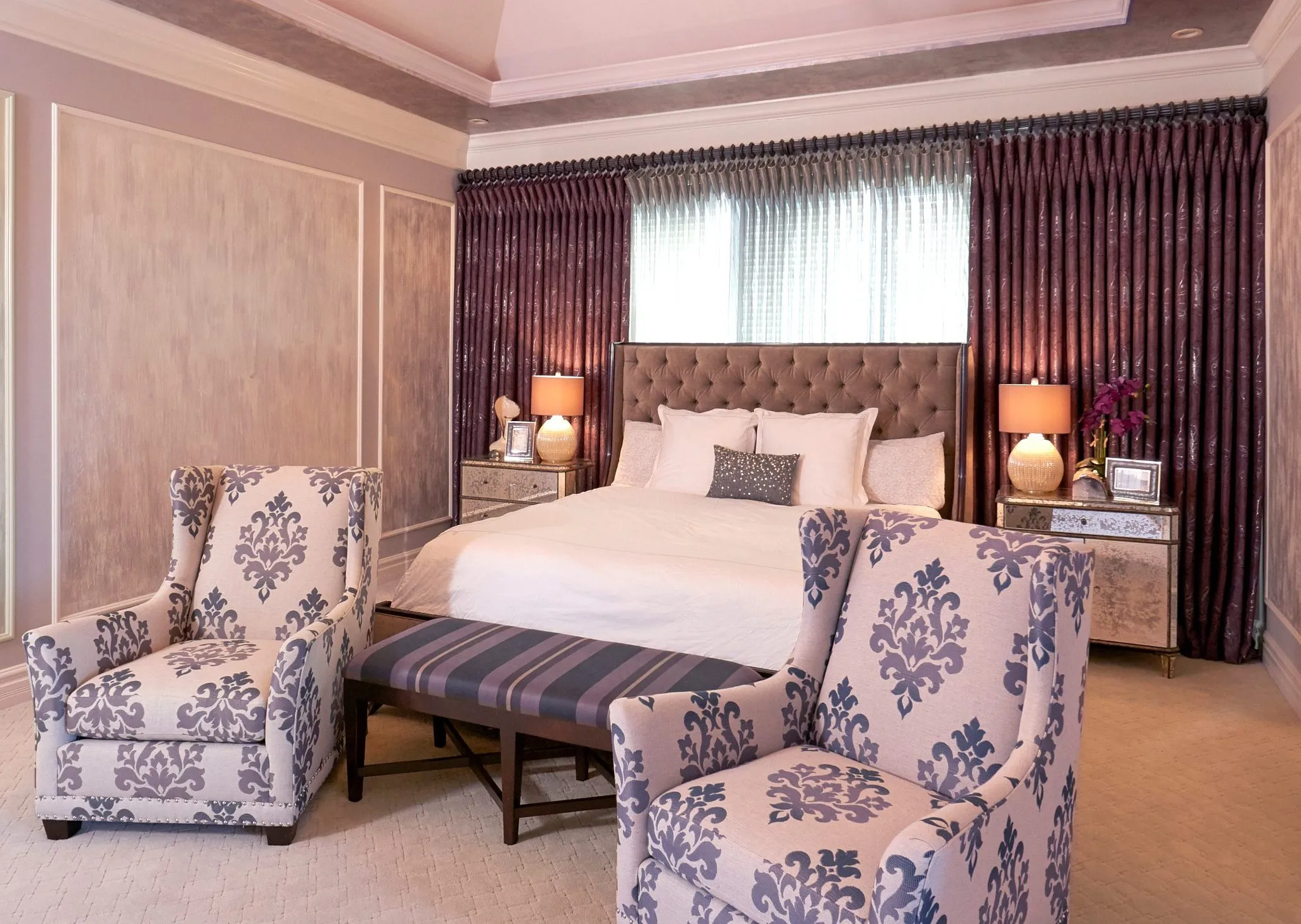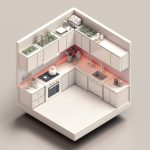Imagine stepping into a room where every element seems to effortlessly belong, a symphony of colors, textures, and furnishings that create a sense of peace and visual delight. This is the power of harmony in interior design—transforming a house into a home, a space that nurtures and inspires.
Interior Design Harmony: Where Everything Just Clicks
Harmony in interior design is the artful composition of elements that creates a balanced and unified whole. It’s not about sterile, matchy-matchy decor, but rather a space where diverse components—colors, textures, furniture, and even the overall ambiance—coexist in perfect equilibrium.
This sense of harmony isn’t just visually appealing; it profoundly impacts how we feel within a space. A harmonious room can reduce stress, encourage relaxation, and even spark creativity. It’s about crafting an environment that reflects your personality while promoting a sense of well-being.
Why Does Harmony Matter?
A harmonious space is like a deep, calming breath for your senses. It’s a place where you can truly unwind and recharge. Imagine the difference between these two scenarios:
Scenario 1: You walk into a room painted a jarring shade of neon green. A giant, mismatched sofa dominates the space, while a disco ball throws chaotic reflections around the room. Overwhelmed? Absolutely.
Scenario 2: You enter a room bathed in soft, calming blues. Natural light streams through the window, highlighting the texture of a plush rug beneath your feet. A carefully curated collection of artwork adorns the walls, while comfortable seating invites relaxation. This is harmony—a sanctuary for your senses.
The contrast is clear. Harmony in interior design isn’t just about aesthetics; it’s about creating a sanctuary that nurtures your well-being.
Creating Your Own Harmony Hitlist
Achieving harmony in your home doesn’t require a design degree, just a mindful approach to the key elements:
1. Color Me Calm (or Excited!):
Color is the foundation of any design scheme, setting the tone for the entire space. Cool colors like blues and greens evoke tranquility and are perfect for bedrooms or bathrooms. Warm colors like reds and yellows bring energy and vibrancy, making them ideal for social spaces like living rooms and dining areas.
2. Texture is Your Friend:
Texture adds depth, warmth, and visual interest. Think about the contrast between a smooth, polished coffee table and a chunky knit throw draped over a chair. The interplay of different textures creates a more dynamic and inviting space.
3. Size Matters (in Design, At Least):
The scale and proportion of your furniture should complement the size of the room. A large, sectional sofa will overwhelm a small space, while dainty furniture will get lost in a large room.
4. Patterns: A Little Goes a Long Way:
Patterns introduce personality and visual excitement but should be used strategically. A bold patterned rug can be balanced by solid-colored furniture, while patterned throw pillows can add a pop of interest to a neutral sofa.
5. Your Style, Your Sanctuary:
Harmony isn’t about adhering to rigid rules but rather reflecting your unique tastes and preferences. Whether you’re drawn to vintage finds, modern minimalism, or bohemian vibes, let your personality shine through. The key is to ensure there’s a common thread or underlying theme that ties everything together.
Pro Tips for a Harmonious Home:
- Flow With It: The arrangement of your furniture should facilitate natural movement throughout the space. Avoid blocking walkways or creating awkward corners.
- Green is Good: Plants breathe life into a room, adding a touch of nature and a sense of tranquility.
- Less is More (Sometimes!): Clutter can quickly disrupt harmony. Edit ruthlessly and prioritize quality over quantity.
Remember, creating a harmonious home is an ongoing journey, not a destination. Embrace the process of experimentation, have fun, and trust your intuition!
What is Interior Design Harmony?
Interior design harmony is the cohesive and pleasing arrangement of elements within a space, creating a sense of balance and unity. It’s about more than just aesthetics; it’s about fostering a sense of well-being and creating an environment that reflects your personality.
Key Points of Interior Design Harmony:
- Definition: An inviting and balanced atmosphere where all elements (colors, textures, furniture, ambiance) coexist harmoniously.
- Importance: It fosters relaxation, creativity, and overall well-being in a space.
- Ingredients for Harmony:
- Color: Sets the mood, calming (e.g., blues) or invigorating (e.g., yellows).
- Texture: Adds warmth and depth to a space (e.g., fluffy rugs, woven baskets).
- Scale and Proportion: Ensures furniture fits the size of the room, creating a sense of balance.
- Patterns: In moderation, they add visual interest and personality.
- Style: Reflects personal preferences and can be a mix of styles with a common thread.
- Pro Tips:
- Flow: Arrange furniture to facilitate natural movement.
- Nature: Plants enhance a space with life and tranquility.
- Minimalism: Clutter can disrupt harmony, opt for editing objects when necessary.
Minimum 4 Key Lines:
– Harmony in interior design creates balance and cohesion, resulting in a pleasing and well-integrated space.
- Achieving harmony involves carefully considering color palettes, furniture arrangements, and accessories, ensuring each element complements the others.
- Harmony is achieved when all elements of a room fit together harmoniously, creating a sense of unity and flow.
- Mastering the principles of harmony transforms disjointed spaces into cohesive areas that reflect both personal taste and functionality.
Condensed & Organized Context:
What is Harmony in Interior Design?
- Harmony seamlessly integrates different elements within a space, creating a balanced and aesthetically pleasing environment.
- Harmony encompasses color palettes, furniture arrangement, and decorative accessories that complement each other.
Importance of Harmony in Interior Design
- Harmony creates a space that exudes balance and cohesion.
- It transforms disjointed areas into cohesive environments that reflect personal taste and functionality.
- Harmony promotes a sense of well-being and comfort within a space.
Achieving Harmony in Interior Design
- Key principles for achieving harmony include:
- Balance: Distributing elements evenly throughout the space.
- Contrast: Using different colors, textures, and patterns to create visual interest.
- Proportion: Ensuring elements are sized appropriately in relation to each other.
- Rhythm: Creating a sense of movement and flow through the use of lines, shapes, and colors.
Examples of Harmony in Interior Design
- A room with a cohesive color scheme that incorporates complementary shades and accents.
- A living room with furniture arranged to create a comfortable and conversational seating area.
- A bathroom with a balanced mix of natural and artificial lighting to create a relaxing ambiance.
Unique Insights:
- The influence of personal style and preferences on achieving harmony.
- The role of lighting in creating a harmonious atmosphere.
- The use of natural and organic materials to enhance harmony and promote well-being.
- The importance of considering the scale and proportions of elements within a space.
How Does Interior Design Harmony Work?
Harmony in design operates on the principle of creating a sense of visual and emotional balance. It’s about orchestrating different elements—color, texture, furniture placement—to work together in a way that feels both intentional and effortless.
Minimum 4 Key Lines:
- Harmony in interior design is the artful blending of various design elements to create a balanced, cohesive, and visually appealing environment.
- Achieving harmony requires careful coordination of colors, integration of materials and textures, as well as efficient space planning.
- Harmony focuses on the overall aesthetic appeal of a space, ensuring that every element complements the others to create a sense of unity and flow.
- By understanding and implementing harmony principles, interior designers can create spaces that evoke a sense of peace and serenity.
Condensed & Organized Context:
Key Line 1: Harmony in interior design involves creating a balanced and cohesive environment by harmoniously blending various design elements.
Key Line 2: Harmony is achieved through careful coordination of colors, integration of materials, and textures, as well as efficient space planning.
Key Line 3: Harmony focuses on the overall aesthetic appeal of a space, emphasizing unity and flow among all elements.
Key Line 4: By understanding and implementing harmony principles, interior designers can create spaces that evoke a sense of peace and serenity.
Unique Insights:
- The context primarily focuses on the practical aspects of achieving harmony in interior design, such as color coordination and space planning. Exploring the psychological and emotional effects of harmony on occupants could provide a unique perspective.
- The concept of “unity in variety” could be further explored to explain how harmonizing diverse elements can create a visually pleasing and cohesive whole.
- Examining the role of harmony in different interior design styles, such as minimalist, traditional, or eclectic, could provide practical examples and insights for readers.
Key Takeaways:
- Harmony in interior design blends elements to evoke balance and cohesion.
- It’s achieved through color coordination, material integration, and furniture arrangement.
- Harmony emphasizes unity and flow, making spaces peaceful and inviting.
Here’s a breakdown of how the different aspects of design work together to create harmony:
- Color: Establish a color palette that evokes your desired mood. Consider the psychology of color—soothing blues and greens for relaxation, vibrant yellows and oranges for energy.
- Texture: Mix and match textures to add depth and dimension. Contrast a smooth leather sofa with a nubby rug or woven baskets.
- Furniture Arrangement: Arrange furniture to create a natural flow and define different areas within a room. Avoid blocking pathways or creating cramped spaces.
- Nature’s Touch: Incorporate plants, natural light, and organic materials to foster a sense of serenity and connection to the outdoors.
Elements of Interior Design Harmony
Creating a harmonious interior design is like composing a symphony – it’s about orchestrating the different elements of a space to work together in perfect balance. Let’s explore the key elements that contribute to this harmonious flow.
Color Harmony: Setting the Mood
Color is a powerful tool in interior design, capable of instantly shifting the atmosphere of a room. Warm colors, such as reds, oranges, and yellows, evoke feelings of energy, passion, and excitement. They are often used in social spaces, like living rooms and dining rooms, to create a welcoming and stimulating environment. Cool colors, including blues, greens, and purples, have a calming and relaxing effect, making them ideal for bedrooms and bathrooms.
Understanding the basics of color theory can help you create a harmonious palette. Complementary colors (opposite each other on the color wheel) create a dynamic contrast, while analogous colors (next to each other on the color wheel) provide a sense of unity and flow.
Texture Harmony: Adding Depth and Interest
Imagine a room with only smooth, polished surfaces. It would likely feel sterile and uninviting. That’s where texture comes in—adding depth, warmth, and visual interest.
Think about the contrast between a plush velvet sofa and a sleek metal coffee table or the tactile difference between a sisal rug and a sheepskin throw. By incorporating a variety of textures, you engage the senses and create a more dynamic and inviting space.
Proportion Harmony: Finding the Perfect Balance
Proportion in interior design refers to the size and scale of elements in relation to each other and the overall space. Just as a well-proportioned piece of furniture is visually pleasing, so too is a well-proportioned room.
Consider the size of your furniture in relation to the room’s dimensions. A soaring, vaulted ceiling can handle a large statement chandelier, while a smaller room benefits from more understated lighting.
Pattern Harmony: A Touch of Personality
Patterns inject personality and visual excitement into your design. From bold geometric prints to delicate florals, patterns can transform a space.
When incorporating patterns, consider scale and balance. A large-scale print might be best suited for a statement wall, while smaller patterns can be introduced through textiles like throw pillows or curtains.
Flow and Negative Space: Breathing Room for Your Design
Flow refers to the ease of movement within a space, while negative space refers to the empty areas around furniture and decor. Both are crucial for achieving a harmonious balance. Furniture should be arranged to facilitate natural walkways, and negative space should be embraced to give the eye a place to rest.
The Art of a Harmonious Home
Key Lines:
- Harmony in interior design is the art of creating a visually pleasing and cohesive space by balancing different design elements.
- To achieve harmony, designers utilize principles such as color harmony, texture harmony, proportion harmony, and pattern harmony.
- Harmony in interior lighting encompasses finding the right balance between ambient, task, and accent lighting.
- Effective use of repetition and contrast can enhance harmony, creating a sense of unity and completeness within a space.
Condensed & Organized Context:
Key Line: Harmony in interior design is the art of creating a visually pleasing and cohesive space by balancing different design elements.
Supporting Points:
- Harmony is crucial for creating a sense of visual calm and comfort in an interior space.
- Designers mix and match furniture, decor, and room elements while considering their shape, size, color, and texture.
- Successful harmony requires careful planning and attention to detail to ensure a visually appealing and unified interior.
Key Line: To achieve harmony, designers utilize principles such as color harmony, texture harmony, proportion harmony, and pattern harmony.
Supporting Points:
- Color harmony involves using colors that complement or contrast each other to create a visually balanced scheme.
- Texture harmony combines different textures, such as smooth, rough, or velvety, to add depth and interest to a space.
- Proportion harmony refers to the relationship between the size and scale of different elements within a room, ensuring a visually balanced composition.
- Pattern harmony incorporates different patterns, whether similar or contrasting, to create visual interest and unify a space.
Key Line: Harmony in interior lighting encompasses finding the right balance between ambient, task, and accent lighting.
Supporting Points:
- Ambient lighting provides overall illumination, while task lighting focuses on specific areas.
- Accent lighting highlights particular elements or creates visual interest.
- The combination of these lighting types creates a harmonious and functional lighting scheme.
Key Line: Effective use of repetition and contrast can enhance harmony, creating a sense of unity and completeness within a space.
Supporting Points:
- Repetition involves using similar elements throughout a space to create a cohesive look.
- Contrast can be achieved through differences in color, texture, or shape to add visual interest and break monotony.
- Balancing repetition and contrast creates a harmonious and visually appealing interior.
Unique Insights:
- Exploring the psychological impact of harmony in interior design, such as its ability to evoke emotions and influence well-being.
- Discussing the role of technology in achieving harmony, including smart lighting systems and automated color schemes.
- Investigating the cultural influences on harmony in interior design, showcasing how different cultures interpret and achieve balance and cohesion in their interior spaces.
Creating a harmonious interior design is an art form—a delicate dance between the tangible elements of a space and the intangible feelings they evoke. By understanding and implementing the principles of harmony, you can transform your house into a home that is both aesthetically pleasing and emotionally nurturing.
Sources Interior Design Harmony: A Comprehensive Guide
Want to explore further?
- Dive into a world of interior design inspiration with our stunning collection of interior design coffee table books.
- Color inside the lines with our intricate interior design coloring pages to craft your own inspiring masterpieces.
- Let our local experts guide your renovation journey with our comprehensive directory of interior design services in Orange County.
- Best Color Backsplash For White Cabinets: Ideas Youll Love - November 27, 2025
- White On White Backsplash: A Timeless Kitchen Design Choice - November 26, 2025
- Tile Backsplash With White Cabinets: A Kitchen Design Guide - November 25, 2025










